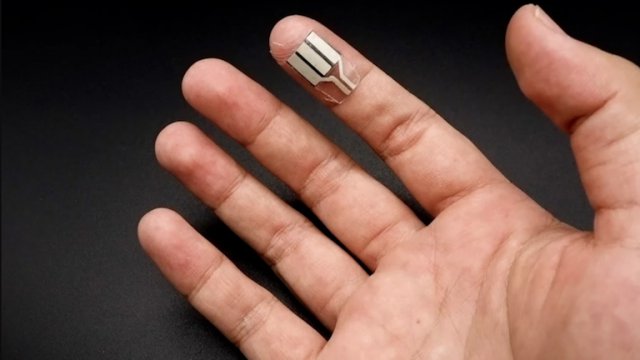An exciting area of research is emerging about how wearables of the future might be powered by human sweat, and at the forefront of these developments is a team of engineers from the University of California. The latest creation of the group takes advantage ofFingertips sweat to generate electricity when the user is sitting or even sleeping, providing a potential energy source 24 hours a day, 7 days a week.
Among the many sweat-powered sensors and wearables we’ve looked at over the years, the UCSD team provided some promising examples. Back in 2014, scientists demonstrated temporary tattoos that work like a bio-battery powered by sweat, and last year demonstrated a wearable vitamin C sensor that works by similar means. Recently, the team developed a smart shirt that generates electricity through sweat and movement.
The newly unveiled wearable device is touted as the first of its kind, as it can generate power even when the user is sleeping or sitting down. This could open up some interesting possibilities in the wearable space, where the device can act as a power source anywhere and anytime.
“Unlike other sweat-powered wearables, this device requires no exercise, and does not require physical intervention from the wearer to operate,” says co-first author Lu Yin. “This work is a step forward in making wearable devices more practical, affordable and available to everyday people.
In developing this new type of wearable, the team had to get creative in combining a mixture of ingredients that absorb sweat and turn it into energy. The thin, patch-like strip of electrodes is made of carbon foam that absorbs sweat and uses the enzymes built into it Catalyzes chemical reactions between lactate and the oxygen molecules inside, which in turn generates electricity which is stored in a small capacitor.
Mounted on the fingertips, the device makes use of more than a thousand sweat glands on each tip of the fingers which produce 100 to 1,000 times more sweat than most other parts of the body.
That’s why the authors describe fingertips as 24-hour sweat factories.
“The reason we sweat more on other parts of the body is because those patches aren’t very well ventilated,” says Yin. “Conversely, the fingertips are always exposed to air, so the sweat evaporates when it comes out. So instead of letting it evaporate, we use our devices to collect that sweat and it can generate a huge amount of energy.”
Although the device generates most of its electricity in this way, it is not its only peculiarity. under its poles, The device also features a piezoelectric material that generates additional electricity in response to pressure.
This means that activities such as writing, texting, or playing the piano can also lead to an increase in energy.
In one experiment, participants wore the device with one finger during 10 hours of sleep, generating nearly 400 millijoules of energy, which scientists say is enough to power an electronic clock for 24 hours. One hour of “random” typing and mouse clicking allowed the device to generate approximately 30 millijoules.
“Compare this data with a device that collects energy during training,” explains Yin. “When running, you invest hundreds of joules of energy just for the device to generate a few millijoules of energy. In this case, the return on energy investment is very low. But with this device, the return is very high. When you sleep you don’t work. Even with the flick of a finger One, you only invest about half a millijoule.
In separate experiments, the team used the new energy harvester to power chemical sensors and displays, including a previously developed vitamin C sensor. They are now working on improving the device to make it more efficient and durable, and hope to combine it with other power harvesters in order to Creating new types of autonomous wearable devices.
“Our goal is to make it a practical device,” says Yin. “We want to show that this isn’t just another cool thing that can generate a small amount of power and then that’s it – we can actually use the energy to power useful electronics like sensors and displays.”
The study was published in the journal Joule.

“Web fanatic. Travel scholar. Certified music evangelist. Coffee expert. Unapologetic internet guru. Beer nerd.”





